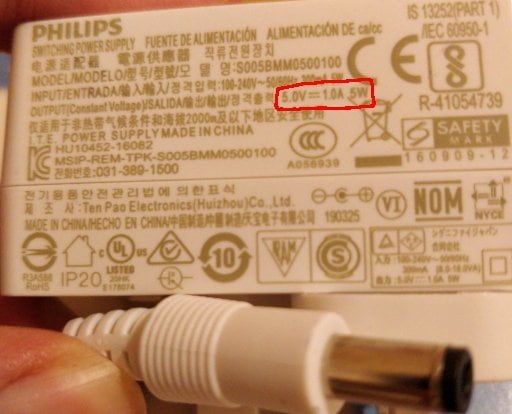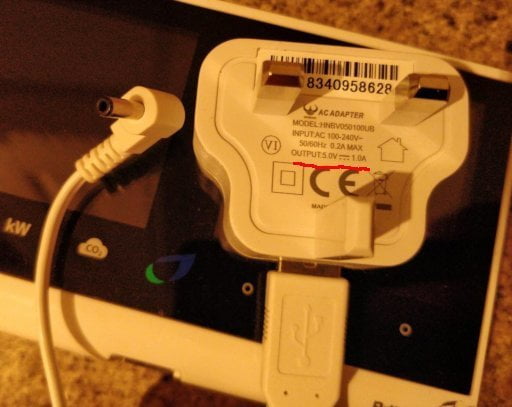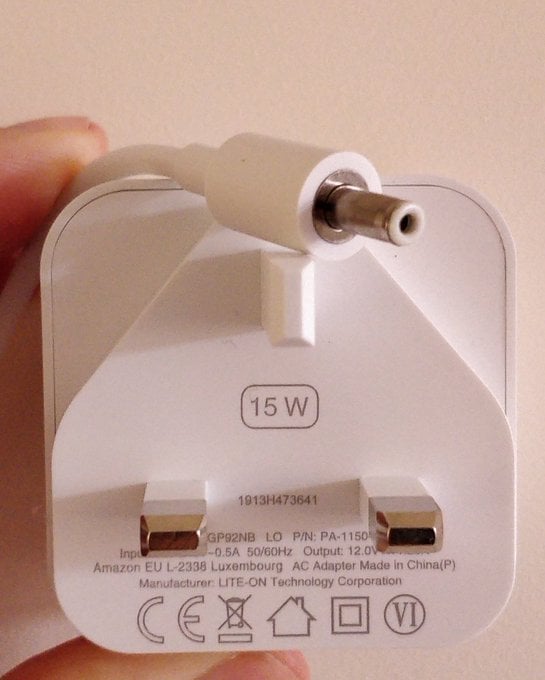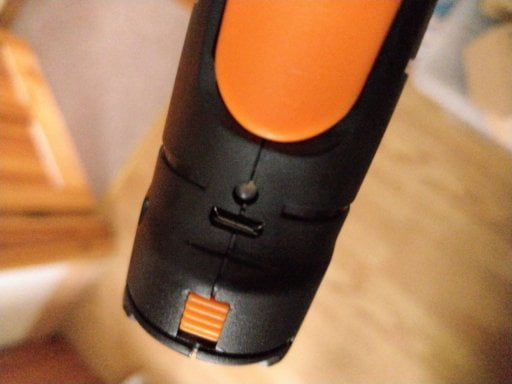Why doesn't everything charge via USB?
This isn't entirely a rhetorical question. I'm genuinely interested.
A few weeks ago, I bought an electric screwdriver. One of the key selling points, for me, was that it charged via micro-USB.
My last electric screwdriver had some weird proprietary connector which broke. I've hundreds of USB cables - of various lengths - and dozens of chargers - of various strengths.
I will always be able to buy a new charger for this screwdriver - even if the original manufacturer goes bust. In fact, the screwdriver didn't even come with a plug - just a short length of cable - which made it cheaper to buy and lighter to ship.
So why doesn't everything* charge via USB?
(*Where "everything" means small, portable electronics. Not like fridges and cars.)
10 Watts ought to be enough for anyone
The USB standard mandates that ports pump out 5 Volts, but they differ in how many Amps they can supply. For example, the ports on the back of my TV only do 0.5A - just enough to power to run an old Chromecast. But my extra chunky USB charger happily does 2.4A per port - enough to run nearly everything.
A quick look at all my gadgets shows the majority of them should happily charge via USB.
The Philips Hue Hub is 5V/1A - but has a barrel connector.

My home energy monitor is also 5V/1A - it comes with a USB charger and a barrel lead!

My electric razor is 4.5V/1A - again, with it's own weird connector. My electric toothbrush charger, handheld vacuum cleaner, and a whole mess of rechargeable kitchen gadgets all demand a bespoke connector and plug.
Make the connection
Perhaps, for some weird reason I don't understand, manufacturers need a barrel connector?
There are loads of USB to barrel connectors - they're cheap!

A cylindrical connector is easier to plug in. I think that's about its only advantage. But if manufacturers wanted a cable that doesn't care about orientation, they could use USB-C.
Wither USB-C?
The latest and greatest USB standard is "C". It's the plug which is used on all new phones. It's on the Nintendo Switch, and the latest MacBooks and Laptops. Heck, it's even on the latest Raspberry Pi!
USB C supports PD - power delivery - which can go up to 100 Watts. So, theoretically, could charge most home electronics.
But... It isn't quite there yet. My phone uses a proprietary system which only works with the manufacturer's own plugs, games consoles refuse to charge unless you use a blessed cable, and there are some dodgy cables.
Is that why the new Amazon Alexa Echo Dot (or whatever it's called) uses a barrel connector?
 Surely that would be a perfect USB-C candidate?
Surely that would be a perfect USB-C candidate?
What next?
The argument from manufacturers seems to boil down to this:
- Manufacturers are worried that 3rd party cables and chargers won't supply enough power.
- They're also worried that faulty equipment could damage their product.
- Some of them want you to buy expensive chargers.
All of which is undone by the fact it's possible to buy 3rd party barrel connectors of dubious price and quality.
I think the consumer argument is more powerful:
- Consumers want a cheaper price - and they already have plenty of USB chargers and cables. That's why lots of mobile phones don't ship with a separate charger.
- People also want simplicity - taking one charger on holiday, only having one cable next to their bed, etc.
- USB-C is now good enough that a cheap charger can provide power without damaging anything.
So, my plea to manufacturers - USB-C is here. Embrace it. Sure, supply your own length of cable and charger if you really want. But make it easy for us to use one connector for everything.

Elliot says:
Andrew says: